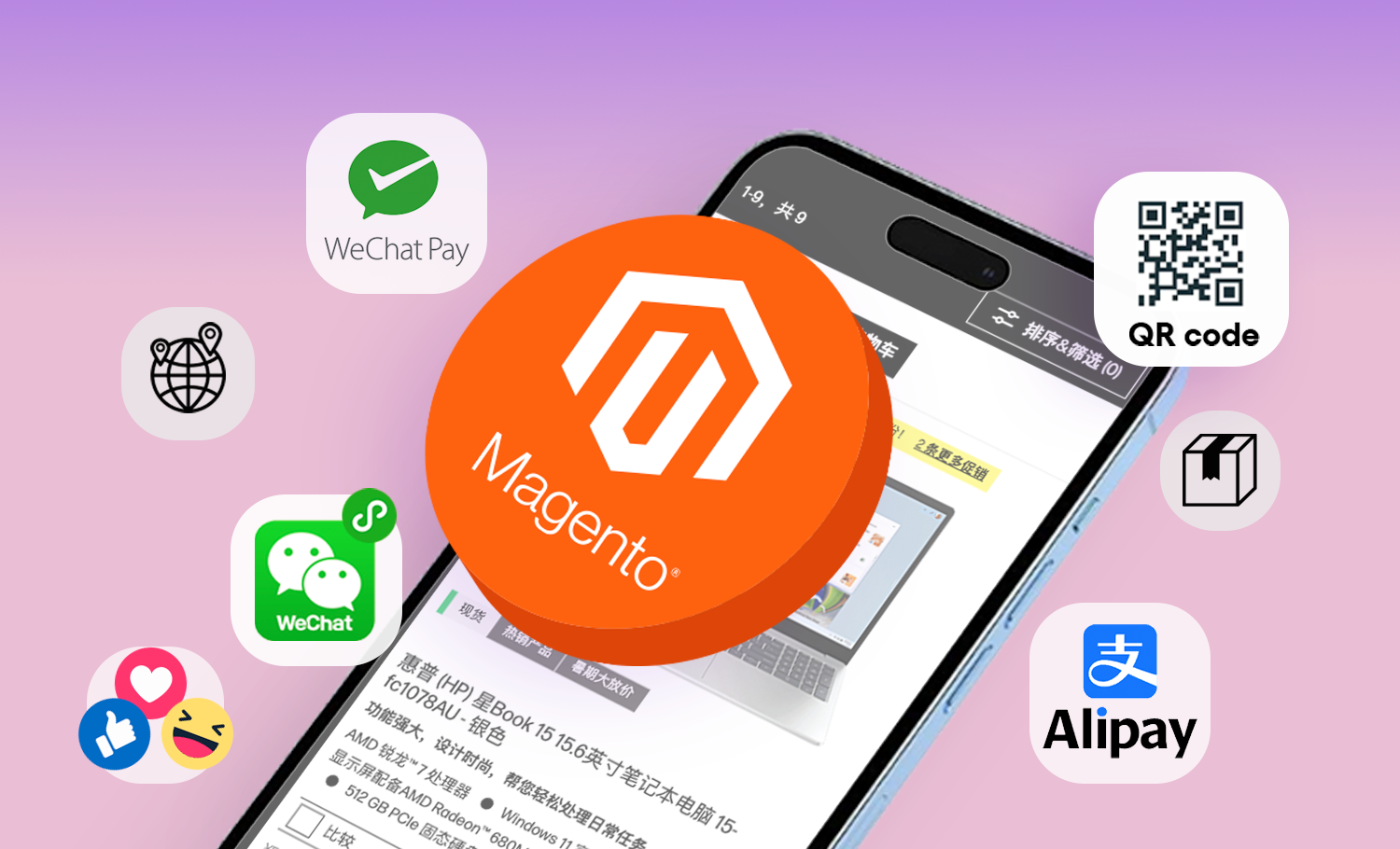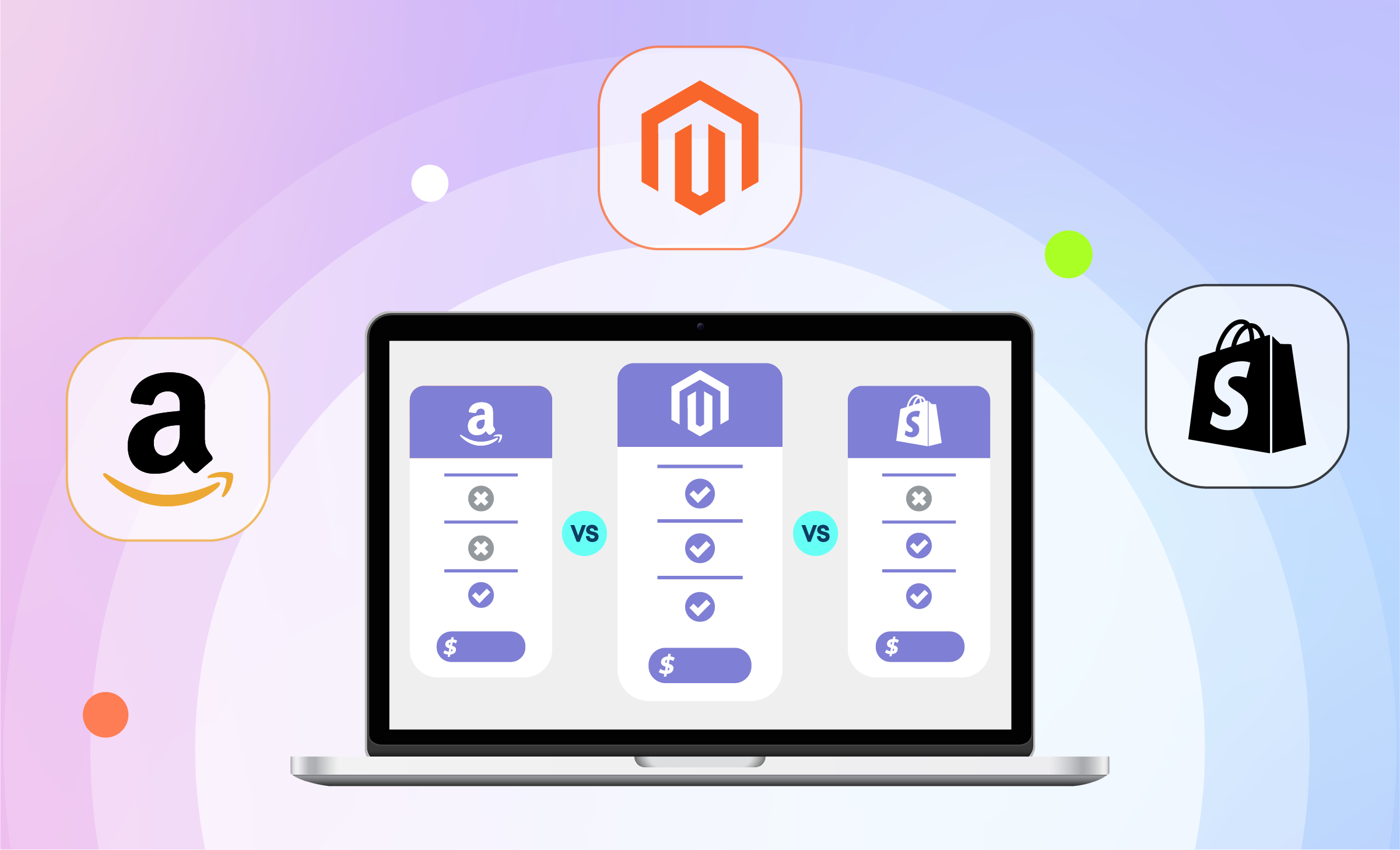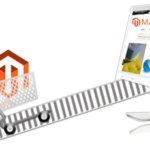As cross-border eCommerce expands, logistics efficiency has become central to a brand's customer experience, cost control, and competitive advantage. Today’s shoppers expect real-time tracking, fast delivery, and localized fulfillment, no matter where your warehouse sits or how far the package travels.
Whether it is shipping from Europe, fulfilling orders across Southeast Asia, or expanding into China or the Middle East, your logistics strategy needs to be as agile and scalable as your store, and the seamless integration of multi-national logistics is where many e-commerce operations run into trouble.
This article explores how to build a logistics-ready Magento stack for cross-border growth and e-commerce expansion to achieve core functions like automatic delivery, intelligent customs clearance, freight estimation, and package tracking.
Need help integrating logistics into your store? Explore our Magento development and integration services for Adobe Commerce to build a stack that scales.
What Magento Offers for Smarter Logistics Integration
Magento’s strength lies in its flexibility. As an open-source, modular platform, it provides full control over how your store communicates with fulfillment systems whether you're working with a local last-mile carrier, a global courier, or a third-party logistics (3PL) platform. Here’s what makes Magento well-suited for cross-border and regional logistics integration:
- API-First Architecture: Magento’s robust APIs allow for real-time order syncing, status updates, and carrier selection logic. This gives your fulfillment partners access to the data they need, without creating delays or manual steps.
- Multi-Store, Multi-Language, Multi-Currency: Magento can support multiple storefronts under a single backend, making it ideal for brands operating across several markets. You can localize delivery options, payment methods, and tracking notifications by country or region.
- Extension Ecosystem: Through platforms like Magento Marketplace, you can easily add pre-built shipping extensions from providers like Easyship, ShipperHQ, Sendcloud, and ShipStation, helping you tap into hundreds of carriers without building custom integrations.
- Support for China-Based and Regional Carriers: Magento can be connected to logistics partners in China and Asia through middleware or API gateways, including major names like Cainiao, SF Express, JD Logistics, and others. This is critical for businesses sourcing from China or fulfilling across APAC and MENA.
If you're selling into multiple countries, we previously covered Multi-store eCommerce: How to Succeed in Global Expansion?From website localization to operation and compliance, these 5 considerations will help your international eCommerce expansion succeed.tips for a successful multi-country site strategy and how to structure your store for localized logistics.
How to Structure Logistics Integrations by Region
Cross-border eCommerce success hinges on building a fulfillment setup that meets local expectations, supports real-time syncing, and keeps your operations scalable as you expand. Magento gives you the flexibility to integrate logistics in different ways depending on your strategy, technical stack, and target region.
Let’s look at a simplified 3-step framework to help structure regional logistics integration in Magento:
Step 1: Define Market-Specific Logistics Requirements
Each market brings unique fulfillment norms. From cash-on-delivery in Southeast Asia to parcel lockers in Europe and bonded warehouses in China, your store’s shipping logic must align with local preferences. Here’s a quick snapshot of regional differences:
| Region | Common Carriers | Notable Preferences |
|---|---|---|
| China | SF Express, Cainiao, JD Logistics | Bonded warehouses, DDP handling, fast urban delivery |
| Southeast Asia | Ninja Van, J&T Express, LEX | COD, flexible delivery addresses, SMS notifications |
| Middle East | Aramex, SMSA Express, Fetchr | COD, Arabic communications, delivery scheduling |
| Europe | DHL, DPD, GLS | Parcel lockers, green delivery options, VAT handling |
Step 2: Choose Your Integration Method
Magento supports multiple approaches to connect with logistics providers. Choose the one that best fits your operational complexity:
- Direct Carrier API Integration: Ideal for full control, but requires development time and ongoing maintenance.
- Magento Marketplace Extensions: Quick-start with prebuilt modules (e.g. DHL, FedEx, SF Express), often maintained by the carrier or a certified partner.
- Middleware Platforms: Tools like Easyship, Sendcloud, and ShipperHQ connect your Magento backend to multiple regional carriers through one interface — reducing overhead and improving flexibility.
Tip: Brands using Magento with fulfillment partners in China often benefit from middleware solutions that bridge data between China-based 3PLs and international order workflows. Some recommended Magento-compatible logistics solutions are:
| Extension / Platform | Supported Regions | Key Features |
|---|---|---|
| Easyship | Global | Auto-calculates shipping and duties, generates shipping labels, DDP support |
| ShipperHQ | Europe / Middle East | Smart shipping rate logic, supports multi-warehouse fulfillment routing |
| Sendcloud | Europe | One-click integration with 50+ carriers, full Magento 2 API support |
| ShipStation | Europe / Americas / MENA | Multi-platform order sync, warehouse and shipping system integration |
Step 3: Automate the Fulfillment Workflow
A smart logistics setup does more than connect carriers, it streamlines operations across the lifecycle:
- Auto-generate shipping labels
- Assign carriers based on region, product type, or delivery SLA
- Sync tracking numbers and delivery status updates
- Trigger branded notifications (email/SMS) per region
- Handle returns and RTO (return-to-origin) flows efficiently
Scenario Example:
A Magento store ships from China to multiple Southeast Asian countries. Orders are routed through a bonded warehouse in Shenzhen, labels are generated via SF Express or Ninja Van based on destination, and tracking is pushed to customers via SMS and email in local languages, all without manual input.
Shipping isn’t just backend: Read how From Browsing to Delivery: 10 UI/UX Global eCommerce FeaturesFrom browsing to checkout and logistics, these UI/UX features for top Global brands help improve user satisfaction and drive conversion.global eCommerce UX features can improve tracking visibility, delivery preferences, and customer satisfaction.
Common CBEC Logistics Challenges & How to Solve Them
Even with the right partners and platforms in place, logistics can quickly become a bottleneck when expanding regionally. From fragmented carrier systems to mismatched customs data, the smallest gaps in your integration stack can cause delays, errors, or customer frustration.
Here are some of the most common challenges brands face and how Magento can help resolve them.
| Challenge | Magento-Supported Solution |
|---|---|
| Inconsistent API standards across carriers | Use middleware platforms (e.g. Easyship, ShipperHQ) with prebuilt connectors for multiple carriers. |
| Customs declarations and DDP complexity | Implement plugins that auto-populate HS codes and translate item names for localized invoices. |
| Carrier-specific shipping logic | Create custom shipping rules per region using Magento’s built-in condition-based methods. |
| Tracking gaps or unreliable updates | Sync tracking info with customer notifications via extensions or API callbacks. |
| Cash-on-Delivery workflows (SEA/MENA) | Set up regional payment/shipping methods with COD compatibility per storefront. |
| Multi-language shipping notifications | Use Magento’s multi-store and translation capabilities to localize shipping emails or SMS. |
| Managing China-based 3PL integration | Connect to Cainiao, JD, or SF Express through TMO’s custom middleware or API connector. |
Pro tip: When selling across borders, even “small” details like inconsistent item naming in customs forms or lack of localized tracking messages can snowball into major UX and operational issues.
Delivering across borders? Improve post-purchase experience with eCommerce UX services tailored for logistics and fulfillment flows.
Tips for Future-Proofing Your Logistics Stack in Magento
As your eCommerce operations grow across regions, what works today may hit limits tomorrow. A future-ready logistics setup on Magento is not only about speed or carrier coverage but building a foundation that can evolve with market demands, customer expectations, and regulatory changes.
Here are key principles and trends to consider as you scale:
- Plan for Multi-Region Warehouse Logic: Magento allows you to define source-based inventory and shipping logic. If you're expanding to new regions or leveraging bonded warehouses in China, this capability lets you route orders dynamically based on customer location or stock availability.
- Leverage Headless or PWA Frontends: A decoupled frontend helps you display region-specific shipping methods, delivery times, or DDP pricing in real time even when backend complexity grows. It also allows you to localize fulfillment logic per country or channel more easily.
- Enable Smart Labeling and Auto-Documentation: Many regional carriers now require formatted documentation, barcodes, or customs info in multiple languages. Magento can automate this via extensions or API-based workflows (especially useful when shipping from China where customs compliance is strict).
- Prepare for Carbon Tracking and Green Shipping: In markets like Europe and East Asia, carriers are introducing CO₂ emission tracking, carbon offsetting options, and eco-friendly shipping preferences. Magento can be customized to surface these choices or sync with platforms that support them.
- Adapt for Emerging Fulfillment Tech: China-based 3PLs are increasingly adopting warehouse robotics, AI-based inventory forecasting, and real-time container tracking. Magento’s open architecture means you can integrate with these systems, giving you an edge as logistics tech matures.
From customs declarations to data privacy, digital compliance across eCommerce markets is key to keeping your logistics setup risk-free.
How TMO Helps with eCommerce Logistics Integration
Whether you're just getting started with regional shipping or expanding into new markets from a China-based fulfillment center, your Magento store needs more than just plug-and-play solutions. You need a strategy tailored to your stack, your markets, and your growth goals.
At TMO, we help global brands build and optimize logistics-ready Magento stores that work seamlessly across borders. Here’s how we support logistics integration at every stage:
| What We Offer | What It Solves |
|---|---|
| Carrier API Integration & Middleware Setup | Sync Magento with 3PLs in China, SEA, MENA, and EU for real-time shipping control. |
| Custom Shipping Rules & Checkout Personalization | Display accurate options based on region, weight, stock location, or carrier rules. |
| Localized Notifications & Tracking | Automatically send shipping updates in the customer’s language and format. |
| Multi-Warehouse Routing & Inventory Sync | Route orders intelligently between fulfillment centers or bonded warehouses. |
| Cross-Border Customs & Invoice Handling | Automate HS code logic, tax compliance, and documentation based on destination. |
| Scalable Architecture for Headless/Multi-Store | Future-proof your stack to handle logistics diversity as you grow regionally. |
Regional fulfillment is a core part of your brand experience. Whether you’re shipping from China or expanding into new regions, how you integrate and manage logistics in Magento directly impacts your conversion rates, delivery reliability, and long-term scalability. You don’t need to build it all from scratch but you do need a plan.
If you're planning to scale cross-border and want to ensure your Magento store is logistics-ready, get in touch with us for a tailored integration plan that aligns with your stack, regions, and fulfillment goals.














